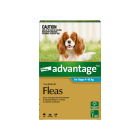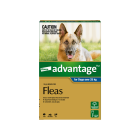
A Look at Doggie Dental Disorders
Just like humans, dogs need their teeth to be brushed. If they are not, plaque can begin to form, which is a mixture of bacteria, saliva, and food particles. At first, plaque is soft and gooey, but, if left on the teeth, it hardens and turns brown in color. At this point, it is called tartar. As tartar builds up, your dog’s gums can become infected and teeth begin to loosen. As you might guess, this is very painful for the dog. To prevent this from happening, you should regularly brush your dog’s teeth to remove the plaque while it is still soft and easy to remove.

Brushing Your Dog’s Teeth
The first step in brushing your dog’s teeth is to establish a regular routine. Choose a time when you are relaxed and that is convenient for both you and your dog. If you feel rushed or anxious, your dog will feel the same. Next, you need to gradually introduce your dog to the idea of tooth brushing. Some dogs will take to it right away, while others will resist.
When getting started with a tooth brushing routine, you should set the toothbrush aside at first and just introduce the toothpaste to your pet on your finger. A product such as Dentipet Toothpaste is an excellent choice because it cleans your pet’s teeth and is available in tasty flavors such as beef and chicken your dog will enjoy. Complete this process in the same way you will once the toothbrush is added – hold onto your dog as if you are cuddling him and stroke the outside of his cheeks with your finger before inserting your toothpaste-covered finger in your dogs mouth.
After doing this a few times with your finger, you can try introducing the toothbrush. Place a small amount of toothpaste on the brush and clean a couple of your dog’s teeth with a circular motion. Be sure to brush right up to the gum line as well as the teeth. As your dog becomes more and more used to this brushing action, you can gradually add more teeth to the routine until you are finally brushing all of your dog’s mouth. You should spend about 30 seconds on each side of the mouth. Be sure to concentrate on the outside of the teeth and don't forget the back teeth because these areas tend to build up tartar the most.
Always perform the brushing action slowly and gently. You should try to gauge your dog’s reaction to the brushing and stop before they become upset. You never want to stop brushing if your dog begins resisting because that will teach them that fighting you off gets them out of having their teeth brushed. When you do finish up for the day, however, be sure to provide your dog with plenty of praise for a job well done.






